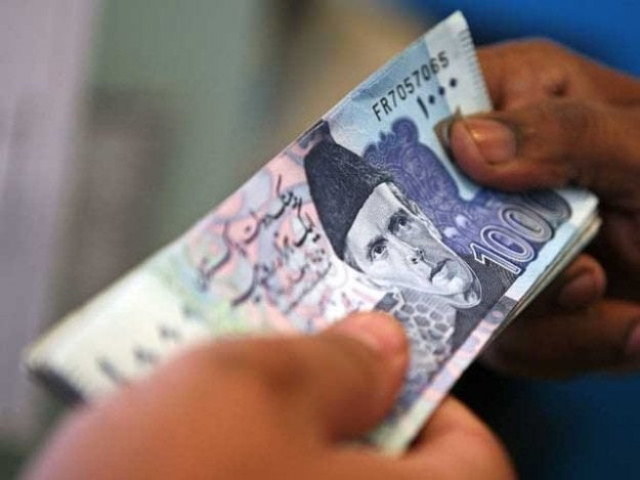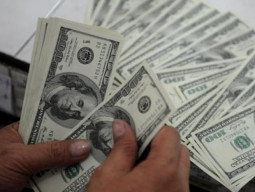
The federal government’s debt has increased to Rs21.8 trillion till the end of August 2017, which was Rs1.003 trillion higher than the level witnessed in June 2017, according to the State Bank of Pakistan (SBP). The federal government’s debt of Rs21.8 trillion is exclusive of its liabilities.
There was a clear mismatch between the pace of accumulation of public debt and the provisional budget deficit of Rs324 billion that the finance ministry reported for the period of July-September of this fiscal year last month. The addition of Rs1.003 trillion to the debt pile in two months was two times more than the budget deficit for the first quarter, suggesting something was wrong in deficit calculations, according to experts in the fiscal sector.
The budget deficit is a measure that shows the gap between expenditures and the revenue. This gap is filled by borrowing from domestic and foreign sources.
Govt sits on critical public debt report
Independent fiscal experts said that a lower budget deficit than the increase in debt can be partly because of accumulation of deposits but the huge difference suggested that the government has not properly booked some of the expenditures in the first quarter.
The finance ministry spokesperson did not respond for a comment on the reasons behind this glaring difference in the budget deficit and debt numbers.
Finance Minister Ishaq Dar has repeatedly claimed that the increase in the public debt is only to the extent of the budget deficit limit, which is also approved by parliament. But his government is in breach of the budget deficit limit approved by parliament for the last three consecutive years.
A net increase of Rs858 billion was recorded in the domestic debt during just the past two months, which was 5.8% higher than that in June 2017, showed provisional statistics the central bank released on Friday. Resultantly, the total domestic debt at the end of August 2017 stood at Rs15.7 trillion.
The external debt that had been recorded at Rs5.9 trillion in June 2017 has also increased to Rs6.1 trillion – a net addition of Rs145 billion in just two months.
When public debt does not translate to economic growth
The huge increase in the debt pile – at a rate of Rs16.4 billion a day – has affirmed apprehensions about the finance ministry deviating from the path of fiscal discipline. The deviation began after the end of International Monetary Fund’s programme in September last year.
However, the finance ministry’s claim that it successfully restricted the budget deficit to Rs324 billion or 0.9% of the GDP during July-September quarter, gave hope that the government would be fiscally disciplined again. The hopes vanished within a month.
In its latest report on Pakistan, the World Bank has said that against 4.1% of the GDP or the rough Rs1.5 trillion official target, the budget deficit in the current fiscal year would widen to 6.1% of the GDP or Rs2.2 trillion.
The share of short-term public debt kept increasing to alarming levels and stood at 50.4% of the total domestic debt. In absolute terms, the short term domestic debt increased to Rs7.9 trillion by the end of August.
The short-term debt grew to Rs1.4 trillion or 21% in just two months, suggesting that the entire increase in the overall debt came from short-term loans. The rise in short-term debt was the result of growing dependence on borrowing through the sale of Market Treasury Bills (MTBs).
World Bank: Pakistan’s macroeconomics conditions have significantly worsened
The federal government’s total borrowing through MTBs increased to Rs4.9trillion. Similarly, the MTBs issued to replenish cash, rose to Rs3.1 trillion.
The mounting short-term debt suggests that banks were not willing to provide long-term loans in anticipation of increase in interest rates, according to analysts.
The finance ministry does not agree that the country’s debt burden has crossed dangerous levels. Nonetheless, it changed the definition of public debt twice through the Finance Act in a bid to conceal the actual debt burden.
The country’s long-term debt, with a maturity period of more than one year to 10 years, instead decreased to Rs7.8 trillion. There was a reduction of Rs505.8 billion or 6% in the long-term loans. Thus short term loans compensated this reduction.
The share of bonds issued by the federal government shrank from Rs4.8 trillion to Rs4.23 trillion despite an overall increase in public debt. There was a net reduction of Rs541 billion or 11.3% in two months.
However, the debt acquired through the sale of prize bonds increased from Rs747 billion to Rs765 billion at the end of August this year.






1726054615-0/OpenAI-(2)1726054615-0-270x192.webp)











COMMENTS
Comments are moderated and generally will be posted if they are on-topic and not abusive.
For more information, please see our Comments FAQ